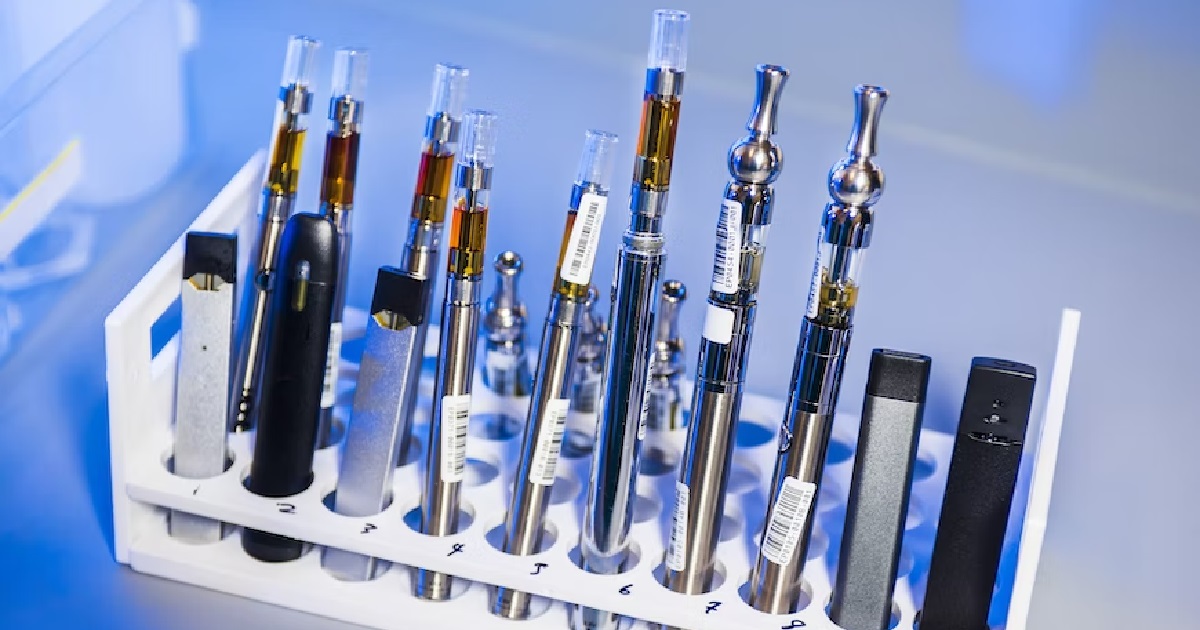
Health Technology, Digital Healthcare
Article | September 7, 2023
Smoking has a lot of consequences to one’s health. It can lead to cancer, heart disease, and chronic obstructive pulmonary disease—all of which are chronic diseases. This is part of the reason why the Health and Human Services agency reports that 70% of adult smokers want to quit. As a medical provider, adults looking to stop smoking will come to you for advice and treatment. One alternative smoking product you might want to recommend is an e-cigarette, given their prevalence in recent years.
In this article, let’s take a deeper look at whether e-cigarettes’ should be recommended for smoking cessation and what other treatment options to endorse to patients.
Are e-cigarettes approved for smoking cessation?
Electronic cigarettes, more commonly known as e-cigarettes, are devices that vaporize nicotine-based liquid to be inhaled by its user. It almost replicates the experience of smoking a cigarette due to the device’s shape and the vapor it produces. However, the FDA has yet to approve e-cigarettes for smoking cessation because there is currently limited research on their effectiveness, benefits, and risks for the human body.
Additionally, scientists at the University of California found harmful metals in the vapor from tank-style e-cigarettes. These e-cigarettes are equipped with high-power batteries and atomizers to store more liquid. These result in high concentrations of metals like iron, lead, and nickel in the vapor. Exposure to and inhaling metallic particles may impair lung function and cause chronic respiratory diseases. As such, medical providers should not recommend e-cigarettes for smoking cessation.
What can medical providers recommend for smoking cessation?
Smoking cessation medication
Presently, two FDA-approved prescription medicines for smoking cessation are Bupropion and Varenicline. Bupropion is an antidepressant that decreases tobacco cravings and withdrawal symptoms. It does this by increasing the brain chemicals dopamine and noradrenaline. This comes in a pill and can be used alongside other smoking cessation aids.
Varenicline also reduces cravings and nicotine withdrawal symptoms. It blocks nicotine receptors in the brain, decreasing the amount of enjoyment one gets from smoking. One thing to note about this is that it will take several days for Varenicline's effects to take place. Therefore, it's best to prescribe these pills 1-2 weeks before the patient quits smoking. Like Bupropion, Varenicline may be used simultaneously with other quit-smoking products.
Nicotine Replacement Therapy
Nicotine replacement therapy (NRT) is a treatment involving nicotine consumption at gradually decreasing levels. This reduces the patient’s desire to smoke without them having to quit cold turkey. NRT involves using nicotine alternatives that don’t produce smoke, such as nicotine pouches and nicotine gum.
Nicotine pouches are oral products containing ingredients like nicotine, flavoring, and plant-based fibers. These are placed between the lip and gum, where nicotine is absorbed into the bloodstream. Different variations have different strengths. On! pouches come in different strengths: 2mg, 4mg, and 8mg. Patients may start from 8mg variants and gradually decrease this dosage as their NRT progresses. Pouches also come in a wide range of flavors—including citrus, mint, and berry—to entice users.
Meanwhile, nicotine gum is chewing gum that contains nicotine. It is chewed a few times before being parked between the gums and cheek for nicotine absorption. The nicotine gums by Lucy are a significantly better alternative for tobacco users. Like pouches, this gum comes in several flavors, such as cinnamon, mango, and wintergreen, and different strengths ranging from 2mg to 6mg.
Counseling
The recommendations mentioned above—medication and NRT—are more effective when coupled with counseling. A Primary Care Respiratory Medicine study revealed that successful smoking cessation is best attained through pharmacological treatment and counseling. Sessions typically involve a patient meeting with a counselor and they discuss their smoking habits, possible causes, and how to mitigate them. Medical providers should include counseling in addition to medication and NRT.
E-cigarettes have yet to be approved by the FDA as smoking cessation aids. For now, medical providers should provide medication, NRT, and counseling to patients who want to quit smoking.
Read More

Health Technology, Digital Healthcare
Article | August 21, 2023
Social media has become a powerful tool to connect people with friends, relatives, family, and other loved ones. Worldwide, around 4.2 billion people are actively using the internet. Among them, 3 billion are regularly active on social media channels. Social media is not just about interpersonal conversations; at least 80 percent of users follow one business on Instagram. With all the ads on your Facebook news feed, you connect with various brands or become aware about many brands. But does social media in healthcare make any impact?
Almost all industries have started to realize the power of social media and how it can impact connecting with consumers. Various social media platforms help companies share information, increase brand awareness, and partner with industry influencers. Social media has overpowered traditional marketing strategies. Social media has become the wave of the future.
Regarding the uptake of social media, the healthcare industry has been a bit slower. However, the industry now has accepted the undeniable importance of social media in healthcare. The reluctance might have been due to the risks associated for the providers as well as patients. Privacy and confidentiality of patient information has to be maintained always. Those were the challenges of social media in healthcare. However, consumers can get information from social media faster than any other tool.
The Healthcare industry includes both the healthcare technology providers as well as the healthcare service providers. Whether you are a service provider or a technology provider, social media can impact your customers equally. This article discusses the positive effects and benefits of social media in healthcare, especially healthcare service providers.
Embraced by the Medical Community
The healthcare industry took notice of social media when government agencies and other business industries started to reap the benefits of social media. A recent survey revealed an interesting fact about the use of social media in healthcare. More than 1500 healthcare providers around the US have social media presence online. Hospitals miss key opportunities if they don’t use social media. These hospital systems have started effectively using social media to reach out to their past, current, and future patients. Social media in healthcare is an easy medium to share vital information with consumers and patients in the industry.
The survey also revealed that more than 30% of medical professionals use various social media platforms to network with their peers. Many physicians also use these social media platforms for multiple activities in open forums. Having an active online presence evokes transparency among clients and peers. Healthcare providers can join various platforms such as Twitter to become healthcare influencers. Through social media in healthcare, providers can make connections, engage the community, and explore the industry.
The Case of Cleveland Clinic, Ohio
Cleveland Clinic in Ohio, US is the best example of how social media can be used to reach out to patients, engage them online, and stay ahead of competitors. They have more than 2 million followers on Facebook, 1.9 million followers on Twitter, and around 5 lack followers on LinkedIn. They have very different and unique social media strategies. They do post about whatever happens on the campus, including doctors practicing in their respective departments and interactive sessions with doctors and HODs, etc. Also, they do provide health tips and information, general health advice, and updates on the latest medical technologies and treatments. Apart from these, the hospital also reaches out to patients for queries and feedback through social media and responds to them promptly. These effective social media strategies help them in building up a brand, reputation management, create a patient relationship and build patient loyalty.
Loved by Healthcare Consumers
To find advice and new treatments, healthcare consumers widely use social media. This creates an opportunity for providers to connect with consumers through various forms of healthcare educational content. More than 40 percent of consumers believe that social media in healthcare affects their wellness decisions and health. Among 18 to 24 years old, 90 percent of people trust the medical information they get on social media. This shows the importance of healthcare providers on social media channels.
Mobile healthcare is expanding as consumers depend more on the internet for information. Countless fitness and health apps are available online. However, many of them are not effective and do not cure diseases but can change behaviors. Having an app will help you increase your accountability, as a provider, among consumers.
Positive Impact of Social Media on Healthcare
The healthcare community is widely embracing the scope of social media in healthcare. Healthcare technology providers, hospitals, and other service providers are opening new accounts to create a consistent image among consumers. There are many ways to improve care by reaching out to patients through social media in healthcare. Some of the positive impacts of best practices for social media in healthcare are as follows:
Increasing Access Across Generations
Healthcare companies have almost stopped employing the traditional ways of advertising. Patients always need quick access to information to reduce the risk of getting flu or to find new providers, including baby boomers, every generation is online. According to Forbes, as of 2017, 9 percent of Facebook users were above 55 years of age. This present generation is very tech-savvy, they search online for local healthcare services and healthcare information. They use Facebook and YouTube. So, you need to create a marketing strategy that targets baby boomers.
Generation X also searches health-related topics online, which accounts for 1.5 billion views on YouTube each day. As they care for children and aging parents, they may search for the best long-term care facilities, how to soothe a colicky baby, and so much more. As millennials are focused on healthy living and being cost-conscious, they depend more on social media platforms for healthcare information. Ninety-three percent of millennials say that they do not rely on healthcare providers for preventive health information.
Thus, as everyone goes online for healthcare information, healthcare service providers should consider the role of social media in healthcare seriously. By providing reliable and accurate information, healthcare providers can engage with consumers and increase the patient experience through social media.
Creating Authenticity
The days that the patients trust doctors blindly have gone. Healthcare consumers have become smarter and want to have relationships with providers who care for them. Allowing your tech-savvy employees to share videos and pictures of events or office helps have a human touch. It also improves patient engagement and overall patient satisfaction.
If patients know the people in your reception or nurses of respective departments, it helps them relax, engage, and makes them share their health history more openly. This is possible as they connect with those in the office through your social media in healthcare. It increases your authenticity.
Keeping an Eye on Competitors
Administrators and marketers keep an eye on their competitors through their social media platforms. They evaluate pain points, community involvements, service lines, and marketing strategies sitting in their offices. Hospitals and other providers can quickly get feedback on technologies and marketing strategies the competitors are using. This would help them if they want to incorporate these things in their care process before investing.
You can take note of the social media platforms where your competitors are performing well. This approach to social media in healthcare would remove the possibility of failure with your social media strategy, especially when you begin with it.
Real-time Updates
During emergencies and other situations, social media in healthcare allows you to communicate quickly. Social media updates can provide life-saving information, from crisis alerts to census notifications. World Health Organization (WHO) is an excellent example; they provide real-time information to the masses regarding any health crisis, warnings, and other critical safety information during disasters, using social media, especially Twitter.
Similarly, by providing real-time information to your consumers through your social media channels, you can increase your authenticity, authority, and dependency. Real-time access to information saves lives.
Gathering Feedback
Patients often want to communicate with their doctors quickly. They may need to share something about a recent appointment or about a reaction they had to medication. Making patients provide feedback on social media helps you learn how they feel about their medicine and care.
You can get essential feedback that might help you improve your care. It also helps you recognize and reward the staff that the consumers recognize. As a provider, you can also get back to them for additional information after the feedback you get from them on social media. This possibility of social media in healthcare will work more to provide better care next time.
Social Media for the Future
Social media in healthcare is going to stay here and have advancements from time to time. Most of the modern consumers are tech-savvy and want to have everything at their fingertips. Modern patients have no patience. Therefore, social media works to engage patients and enhance the patient experience and satisfaction.
Whether you are a large service provider, a solo practitioner, or run a hospital, you need a social media presence. For engaging with your community, social media in healthcare helps a lot. It can make an impact beyond your imagination. Use these strategies to improve the quality of the healthcare you provide.
It may be a tiresome job to do it all alone. We, at Media7, provide social media services to engage your consumers. Whether you are a service provider or a technology provider, we are here to help you with our compelling social media strategies. We help healthcare companies generate leads, brand themselves, increase sales, and make them your happy customers. For more details about us, visit https://media7.com/.
Frequently Asked Questions
What are the advantages and disadvantages of using social media in health care?
When used cautiously, social media can provide clear benefits, such as clinical education, professional networking, and patient’s health promotion. However, there can be disadvantages too, including privacy and confidentiality of patients, resulting in formidable consequences.
How has social media influenced the marketing of health care?
For establishing public awareness and managing reputation, social media is practical means. As part of an effective marketing plan, social media has become an essential medium for healthcare professionals to interact with consumers and engage them.
What is the Importance of Social Media in the hospital?
By providing important and general information on healthcare, hospitals can make their presence more valuable to consumers. Encouraging patients to share their feedback and thoughts makes hospitals connect with them and improve the care process.
{
"@context": "https://schema.org",
"@type": "FAQPage",
"mainEntity": [{
"@type": "Question",
"name": "What are the advantages and disadvantages of using social media in health care?",
"acceptedAnswer": {
"@type": "Answer",
"text": "When used cautiously, social media can provide clear benefits, such as clinical education, professional networking, and patient’s health promotion. However, there can be disadvantages too, including privacy and confidentiality of patients, resulting in formidable consequences."
}
},{
"@type": "Question",
"name": "How has social media influenced the marketing of health care?",
"acceptedAnswer": {
"@type": "Answer",
"text": "For establishing public awareness and managing reputation, social media is practical means. As part of an effective marketing plan, social media has become an essential medium for healthcare professionals to interact with consumers and engage them."
}
},{
"@type": "Question",
"name": "What is the Importance of Social Media in the hospital?",
"acceptedAnswer": {
"@type": "Answer",
"text": "By providing important and general information on healthcare, hospitals can make their presence more valuable to consumers. Encouraging patients to share their feedback and thoughts makes hospitals connect with them and improve the care process."
}
}]
}
Read More

Digital Healthcare
Article | November 29, 2023
Virtual care and telehealth are no longer seen as merely an innovative method of delivering healthcare; technology is now indispensable to protecting patients, staff, and PPE resources amid the coronavirus pandemic. In a recent Harvard Medical School blog, Lee H. Schwamm, MD, shared that “telehealth, the virtual care platforms that allow health care professionals and patients to meet by phone or video chat, seems tailor-made for this moment in time… The current crisis makes virtual care solutions like telehealth an indispensable tool.” He believes that the role of telehealth is vital to our country as “it can help flatten the curve of infections and help us to deploy medical staff and lifesaving equipment wisely.”
Read More

Health Technology
Article | July 5, 2023
Your patients have grown to trust your expertise and recommendations in matters regarding their healthcare. As the sector transitions into a more digital playing field, uninterrupted network connectivity is more than just a bonus; it’s a necessity.
While there are many different challenges to completely integrating your practice into the digital world, internet outages are the costliest. Downtime can be caused by various factors, which can compromise patient safety, the faith your team instills in you, and your practice’s reputation and revenue. However, investing in the means to maintain a resilient network lets you maximize your network uptime to optimize resources.
We'll look at four different strategies and their benefits for your infrastructure so you can focus on what you do best: providing healthcare excellence to your patients.
Strengthening Network Infrastructure
The traditional way of doing things may be great for your remedies and techniques. Still, with a growing number of patients and their contextually relevant demands, your network needs to be able to accommodate many different booking requests, increase user activity on your server, and store sensitive patient information.
High-speed internet connections enhance your network performance and let you, your team, and your patients make the most of your uninterrupted uptime. Fiber-optic networks, when combined with load balancing and proper segmentation, can diffuse and direct network traffic efficiency and prevent congestion, which prevents downtime due to overload.
Implementing Network Monitoring and Management Tools
Much like your patients visit your practice to ensure everything is all right with the current state of their health, your network must also receive the same treatment. Identifying and pre-emptively resolving potential issues and vulnerabilities will prevent much more destructive or expensive problems from occurring.
Use real-time tools to monitor your bandwidth usage and gain visibility of potential bottlenecks. Tools that offer risk monitoring deliver alerts about critical events that pose a threat to your business continuity. Your IT team will be better equipped to troubleshoot issues promptly and optimize performance.
Conducting Regular Network Assessments and Audits
Once you have the proper monitoring tools to manage your network topology better, proactive troubleshooting is a great way to spot-check whether your current solution is working as it should. A network audit is much like proactive troubleshooting; you are looking to see if anything could harm the overall system and catch it before it can develop.
When auditing a network, the primary focus should be security measures. If patient and confidential data is not secure, the smooth operations of your business are the least of your worries. When conducting an audit, consulting with a network service provider will help identify issues with your protocols, data encryption, and firewall configuration.
Establishing Redundancy and Disaster Recovery Plans
Backing up private and confidential data is crucial to ensuring that sensitive information is not lost or exposed. Minimizing network downtime can often be achieved by having backup systems that will keep running in the event of an attack or outage. For example, a dedicated Cloud Access Network, power supplies, and switches will go a long way.
When creating an internet contingency plan, outline steps and protocols with your team that you will take in the event of a complete failure, including things such as brand reputation management, customer service, and data loss prevention.
Looking Forward
As the lines between in-person and digital are blurred, navigating the complexities of implementing a robust network is paramount to your business.
Strengthening your infrastructure, integrating redundant systems, and conducting regular audits and assessments with the proper monitoring and management tools will help you maximize uptime usage and minimize network downtime.
Although overwhelming, working with a reputable network service provider can help you embrace your network topology to remain competitive.
Read More